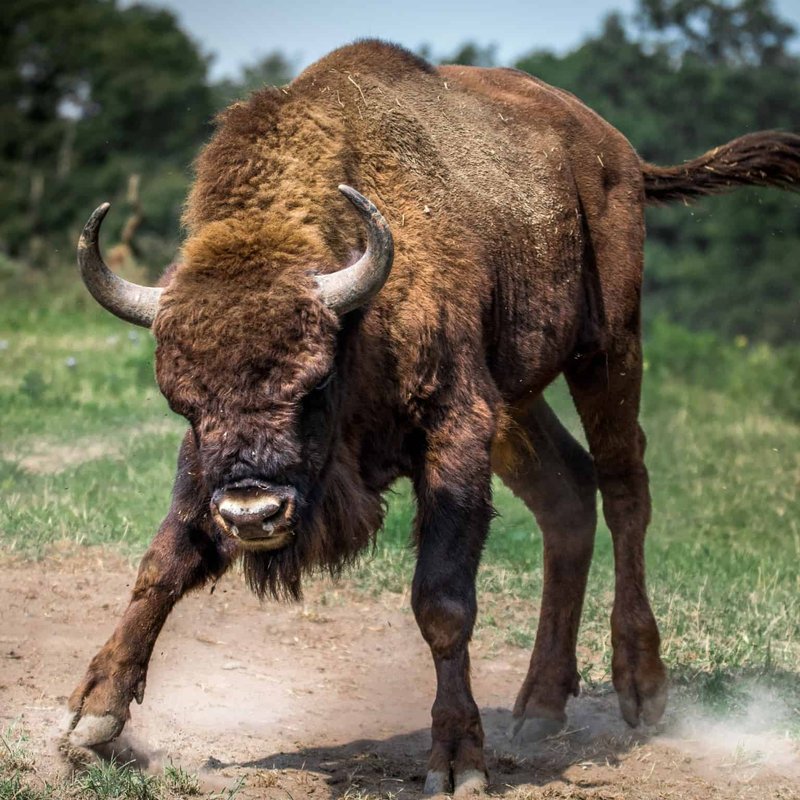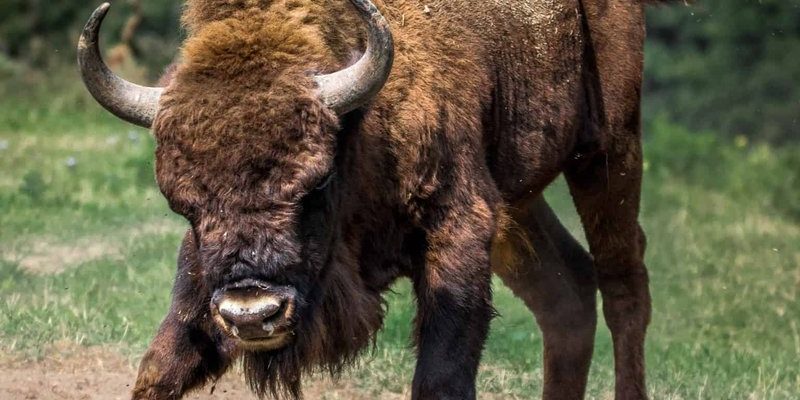
In this article, we’ll dive into the nature of these gentle giants, their behaviors, and the conditions under which they might become dangerous. You might be wondering what to do if you ever encounter one or how to safely observe them in the wild. Let’s get into the details!
Understanding the European Bison
European bison, also known as wisents, are the continent’s heaviest land mammals. They roamed across Europe for thousands of years, but their numbers dwindled due to hunting and habitat loss. Luckily, conservation efforts have helped bring them back from the brink of extinction. You’ll find these animals primarily in forests and national parks, where they roam freely in herds.
Strong and imposing, a European bison can weigh anywhere between 1,000 to 2,200 pounds and stand about 5 to 6 feet tall at the shoulder. With their thick, muscular bodies and large heads adorned with short horns, they can look quite intimidating. However, they typically prefer to avoid confrontations and are more interested in grazing on grass, leaves, and shrubs.
Yet, despite their generally docile nature, there are situations when these bison may show aggression. It all comes down to stress, territorial behavior, and the protection of their young.
What Makes European Bison Aggressive?
You might be curious about what triggers aggressive behavior in these animals. Honestly, it’s often not outright aggression but rather a reaction to perceived threats. If a bison feels cornered or frightened, it can become defensive.
Some common scenarios where this happens include:
- Protecting Calves: A mother bison, or cow, will fiercely defend her young. If she senses you’re too close, she might charge to protect her calf.
- Feeling Trapped: If a bison feels there’s no way to escape, it might charge out of fear or panic. Imagine being in a tight space where you can’t see a way out—that’s how they feel.
- Mating Season: During this time, male bison can become more aggressive. They might display dominance and even engage in fighting with other males, which can also affect nearby humans.
Understanding these triggers is key to staying safe if you happen to cross paths with one of these incredible animals.
How to Stay Safe Around European Bison
If you’re planning to visit areas where European bison roam, it’s crucial to know how to keep yourself safe. Here are some practical tips:
- Keep Your Distance: The general rule is to maintain a distance of at least 100 meters (about 328 feet). This distance helps reduce stress on the animals and keeps you safe.
- Observe from Safe Locations: Use viewing platforms or designated areas to watch bison. This way, you can enjoy their beauty without putting yourself at risk.
- Avoid Surprising Them: If you’re hiking and you encounter a bison, make your presence known by speaking softly. Do not approach them or try to take selfies!
It’s all about respect and understanding. These animals have a right to their space, just like you do in yours.
Signs of Aggression in Bison
It’s essential to recognize when a bison is feeling threatened or aggressive. Here are some signs to look for:
- Head Movements: If the bison lowers its head or starts to stomp its feet, take this as a warning sign. This behavior suggests that the animal is agitated.
- Vocalizations: Bison can grunt or snort when they feel threatened. If you hear these sounds, it’s best to back off.
- Body Posture: Watch for a stiff body posture or raised hair along the back. These are clear indicators that the bison is on high alert.
By learning to read these signs, you’ll be better prepared to handle any encounters.
Real-Life Encounters and Stories
Let’s take a moment to reflect on some real experiences. Many people who have hiked in bison territories share similar stories of awe mixed with a healthy dose of caution. For instance, a hiker in the Białowieża Forest in Poland spotted a herd grazing peacefully. Excited, they pulled out their phone for a picture. But suddenly, a young bison got too close because it was curious about the commotion. The hiker froze, realizing just how close they were getting to a potential confrontation!
In another instance, researchers studying bison behavior have reported that most interactions occur when humans unintentionally invade the animals’ personal space. Their stories emphasize the need for awareness and respect when in the presence of these magnificent animals.
The Importance of European Bison Conservation
Beyond understanding their behavior, it’s vital to recognize the role European bison play in their ecosystem. They help shape the landscape by feeding on vegetation, which in turn supports various plant and animal life. Conservation efforts aim to maintain healthy bison populations while educating the public about safe interactions.
Preserving their habitats ensures these majestic creatures can roam freely and contribute to the ecosystems they inhabit. Additionally, as awareness grows, the chances of negative interactions between humans and bison can decrease.
In conclusion, while European bison can indeed be dangerous to humans under specific circumstances, they are not inherently aggressive creatures. They’re more likely to avoid confrontation if given the space and respect they deserve. Understanding their behavior, knowing how to stay safe, and appreciating their ecological importance helps create a harmonious relationship between humans and these incredible beasts.
So, the next time you’re out in the wild and spot a European bison, remember to admire from a distance. Respecting their space not only keeps you safe but also allows these remarkable animals to thrive. Enjoy the experience, and let them carry on with their day as you watch from afar!

